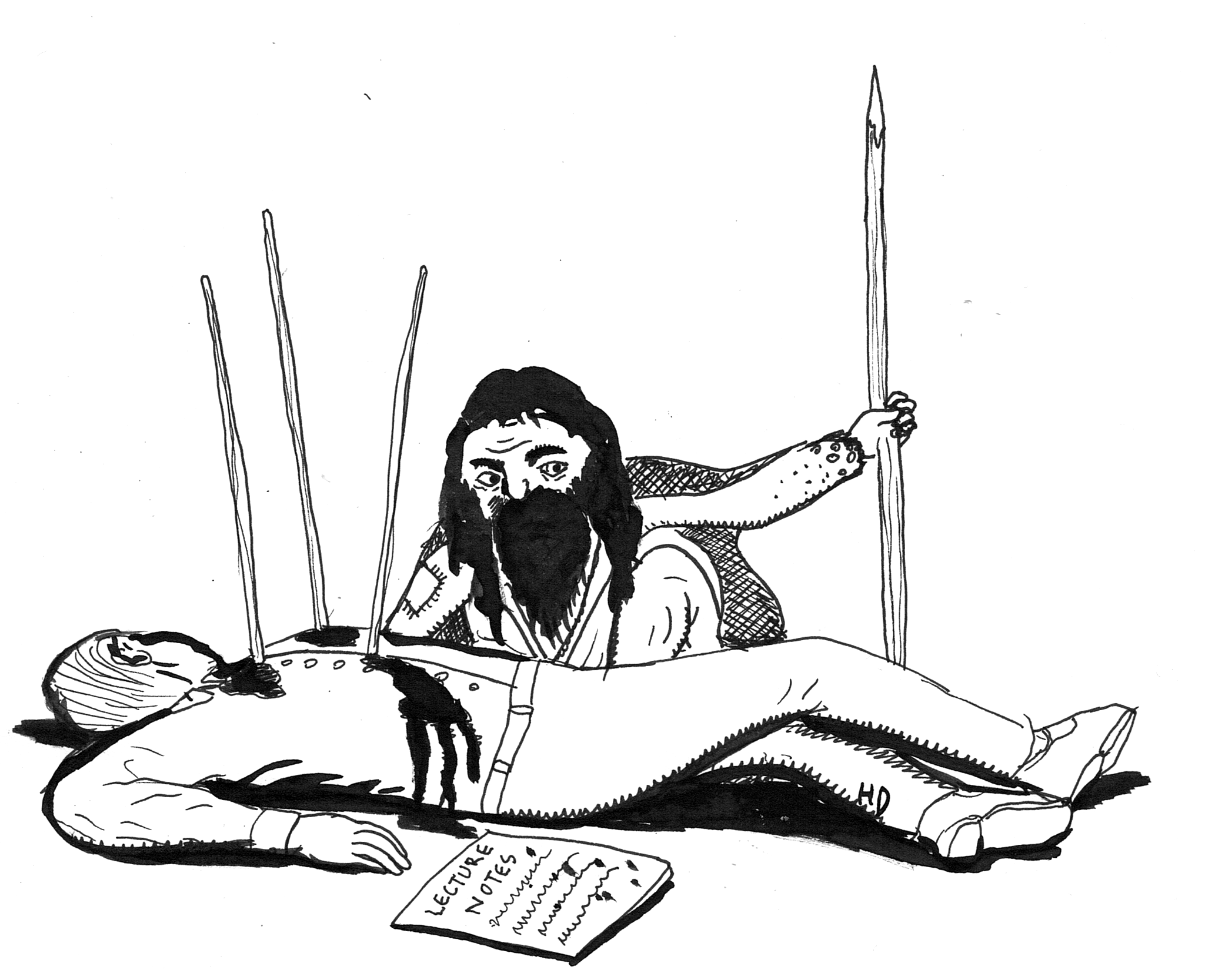So you’ve been lost in the tropical grove for hours, haven’t eaten anything recently, and your next Centrelink payment isn’t for another thirteen days. Luckily, nature’s bounty is all around and ripe for the taking. All you need is a little hunter-gatherer know-how.
Most of you will think of gathering as involving various nuts and berries, however UWA is fairly devoid of edible berries – the closest thing is the Moreton Bay figs that cake the surfaces of pathways. Unfortunately, these provide little nutritional value. Likewise, the dates that grow on some of the palms around campus are of a non-edible variety. If one is to survive on gathering alone, then garden weeds might be the only option. English Dandelion, Flat Weeds, Capeweed, Smooth Cat’s Ear and Sow Thistle all have edible leaves, best harvested while the plant is young. Henry Ford was quite fond of offering guests his ‘roadside salads’ but if you’re going to follow his example you’d better get started on the race-hate. Not to mention that most weeds you’ll find will taste like the lovechild of dirt, shit and spinach.
If you can’t survive on the meager greens growing on the lawns, then hunting may be your only option for a nutritious diet. Options here include hunting the peacocks, which have succulent breast meat and can make a nice pukeko when boiled in water, stuffed with a few small stones. They can also be roasted as one would a pheasant (pair with mature classic reds such as Burgundy, Bordeaux or a Northern Rhone).
The koi in the ornamental pond by Social Science are in fact quite edible once their large scales are removed and they are properly filleted and fried (enjoy with a dry sherry). If you’re planning on staying a while, keeping them in clear water can flush out the bitter taste that comes from the algae they typically consume.
Finally, for the truly adventurous culinary pioneers, there’s always a plentiful supply of what the Marquesas islanders called ‘long pig’. While Pelican does not condone the eating of engineering students, there’ll be very few uses for them once the mining boom is over – so don’t knock cannibalism till you try it (serve with pinot noir as one would a pork roast).
For those still bound by the stifling and archaic code of ethics that chains society, there is one other option. In the anatomy lab UWA keeps a wide selection of meats, which have unfortunately been coated with various preservative chemicals such as formaldehyde. Luckily we can apply an old Nordic method still used by Norwegians and Icelanders to remove the antifreeze and urea from the blood of Greenland Sharks, by burying our delicacies under the ground for six weeks in shallow sandy soil. Rocks should be placed on the ground where it is buried, which will press the fluid out of the meat. Sharks must then be exhumed and dried. The taste should be somewhere between hakarl, lutefisk and pork. Enjoy with a suitably Nordic beverage such as Akvavit or unsweetened schnapps.

